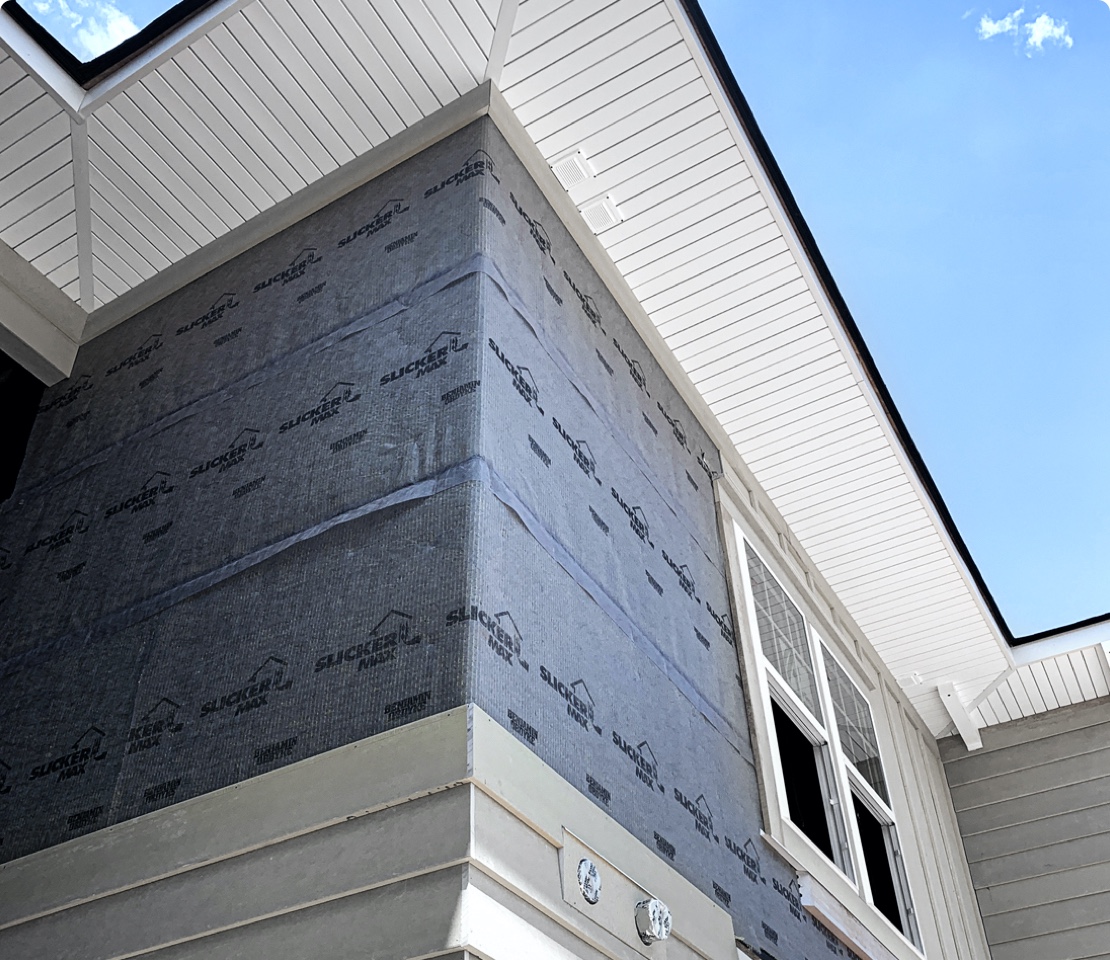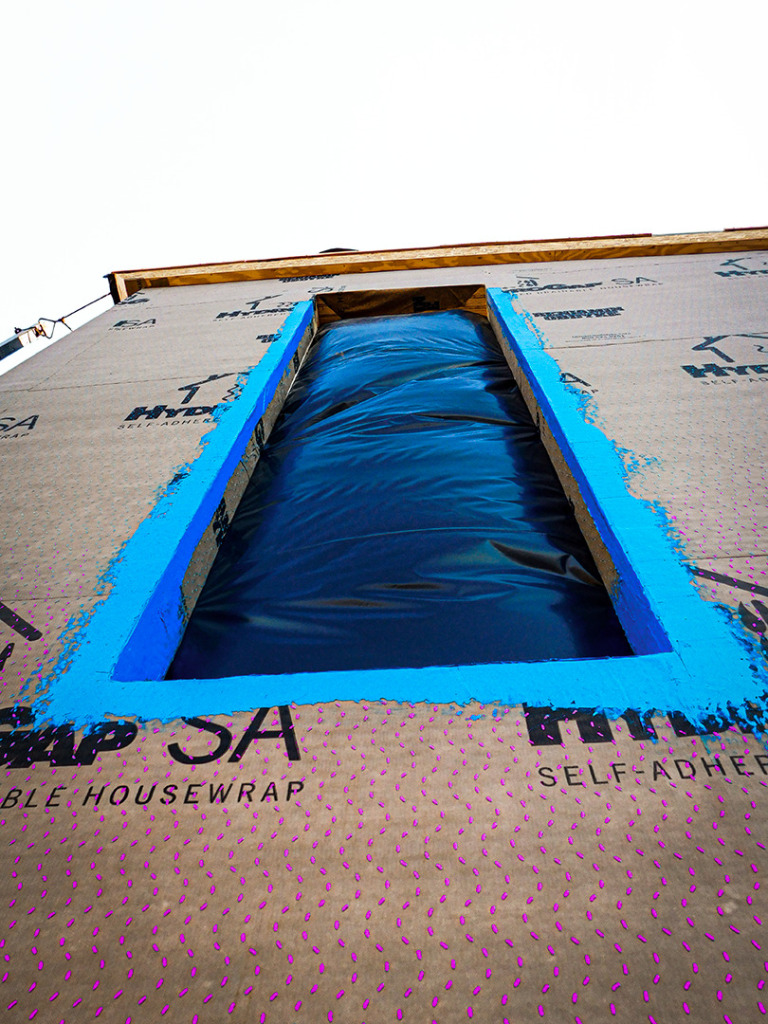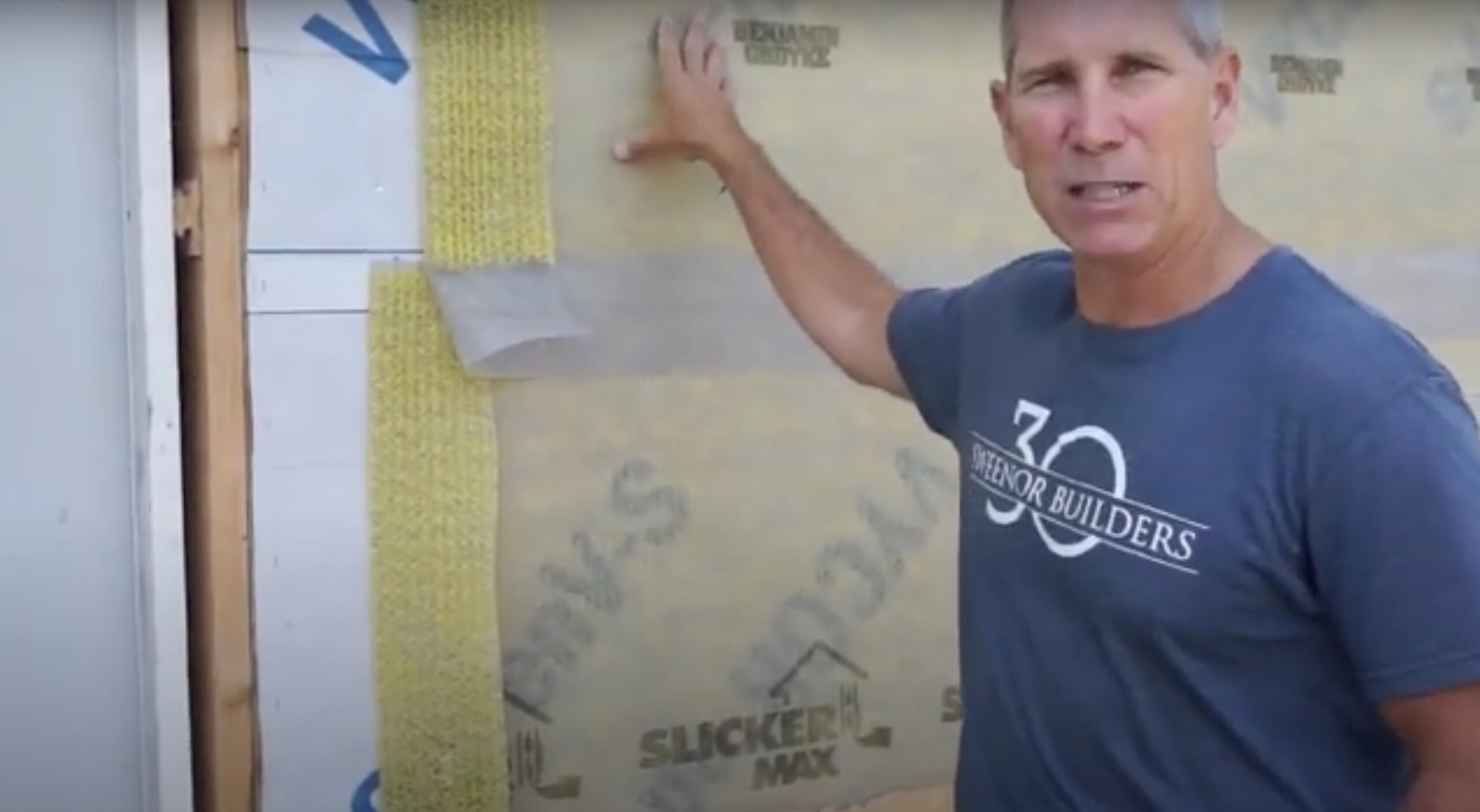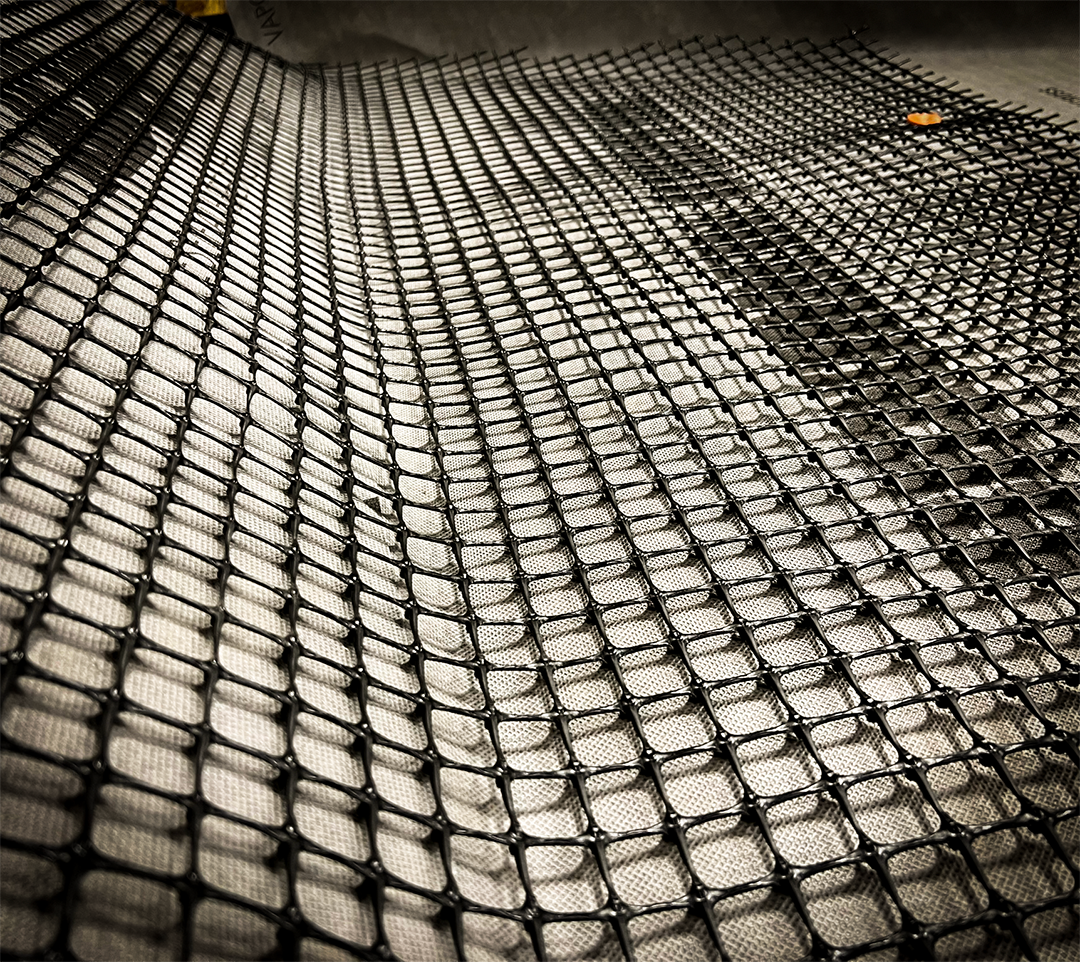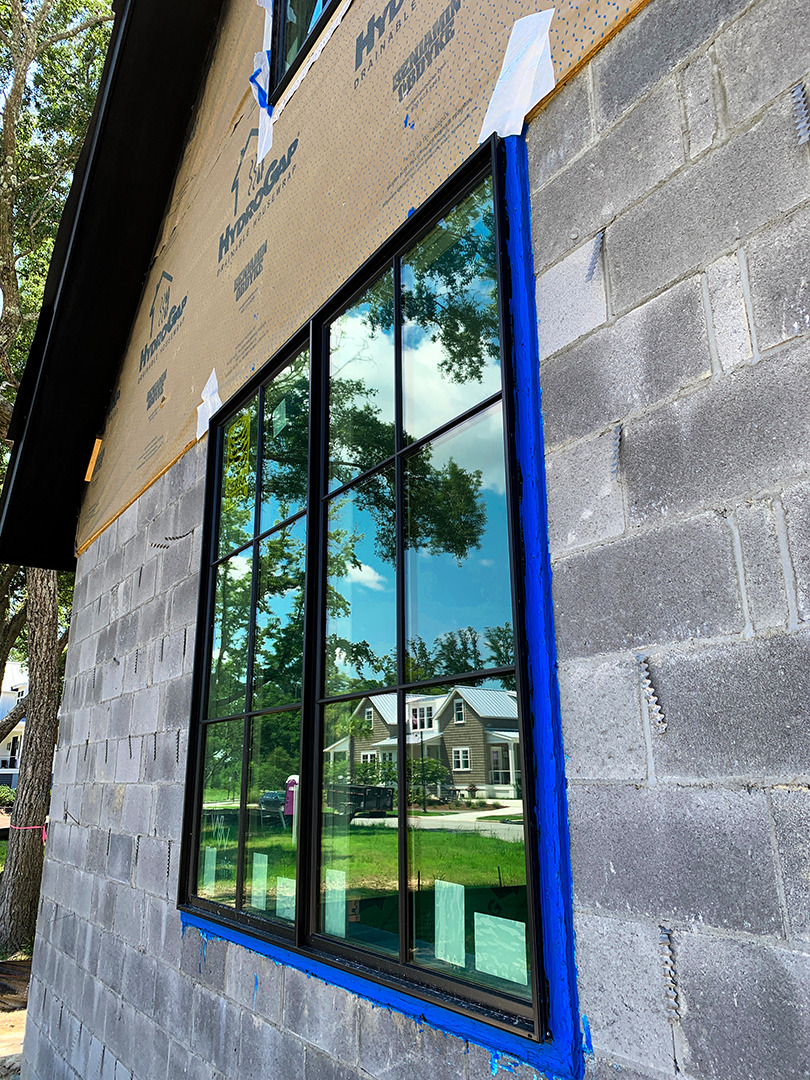Crafting walls and roof systems that protect the home throughout its life requires a systems approach—one that considers the continuity of the envelope’s layers and how they function together to control air and water. Along with preventing moisture from entering the system and causing long-term damage, a systems approach is important for increasing the building’s energy efficiency by reducing penetrations
How to Design the Walls With a Systems Approach
By looking at the overall envelope assembly, designers and builders can get a clear view into which components are serving as the control layers for moisture and for air so that continuity can be maintained. The process identifies problem areas and interruptions to the control layers while ensuring communication and transparency across teams about proper sequencing and installation techniques.
Transitions—knowing how the weather resistive barrier works with flashing and how it transitions to roof underlayment—is one area where a systems approach is critical. Everyone must work together to ensure proper sequencing. If the project’s siding contractor installs a weather resistive barrier that is being used as an air control layer, the roofers then need to make sure they are keeping the layer continuous with proper integration/interface with what the siders installed.
Identifying and planning for penetrations also is important. For example, the HVAC installer may need to place a hole through the control layer for piping or venting, and therefore properly seal to keep air control intact.
Product Considerations for a Systems Approach
Highly efficient assemblies are more intricate, so it’s helpful to choose products and associated installation techniques to make it easier. For example, liquid-applied flashing like HydroFlash® LA is easier to use on tricky window corners and awkward penetrations. Identifying these areas ahead of time ensures no shortcuts are taken in frustration.
Thinking as a system also helps avoid compatibility issues between products. Different materials may react to each other when they come in contact. For example, a flashing adhesive that reacts to the chemicals of a window frame could lead to a breakdown of the window frame and long-term failure risk.
A Systems Approach Starts With Your Manufacturer
Manufacturers, particularly those that make a range of compatible products for wall systems, can help you learn how to take a systems approach to your wall system. Benjamin Obdyke, for instance, can evaluate your project’s design, call out potential problem areas, and help determine any needed detailing and sequencing to communicate to your crews.
Benjamin Obdyke also simplifies the process by offering wall systems designed for a range of common applications while carrying a systems-based warranty. The Rainscreen System for Siding, the most robust solution you’ll find for maximum protection and durability in the wall system, combines the Slicker family of rainscreens, BenWrap housewrap, and HydroFlash self-adhered flashing to create an iron-clad protection system warrantied for 25 years.
To learn more and set up a virtual training session, contact us here.

